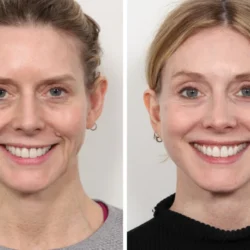In today’s healthcare sector, medical offices face more demand for fast service and clear communication. A strong Virtual Receptionist Healthcare model helps clinics manage administrative tasks and improve how they work with patients.
1. The Shift in Healthcare Office Expectations
Healthcare staff now manage more calls, messages, and records than ever before. Patients want quicker answers and better communication. But many front desk teams are overwhelmed. This results in long wait times, missed calls, and patient frustration.
Offices using a medical virtual receptionist avoid these problems. These services reduce the pressure on on-site teams and let staff focus on patient care instead of phone lines and scheduling.
2. What a Virtual Healthcare Receptionist Does
A virtual healthcare receptionist works off-site but handles front desk tasks by phone and computer. They help medical practices without being physically present.
Tasks include:
- Answering calls
- Setting and changing appointments
- Sending reminders
- Helping with insurance checks
- Handling messages and forwarding urgent ones
Many are trained in HIPAA rules and know how to use patient record systems. This setup supports clinic staff by keeping daily operations organized.
3. Benefits for Medical Clinics
Lower Costs
Offices using virtual medical receptionists avoid high payroll and equipment expenses. They pay only for the time or tasks needed, which helps control budget use.
Better Call Handling
These services answer more calls and cover more hours, including after-hours support. This gives patients more chances to reach the office without delay.
Focus on Patient Care
A healthcare virtual receptionist takes on simple tasks like scheduling or reminders. This lets in-house staff spend more time helping patients.
Fewer Missed Appointments
When receptionists send reminders and confirm bookings, no-shows go down. Some clinics saw up to 25% fewer missed visits after hiring remote teams.
Easier to Adjust Services
Offices can add or reduce hours based on patient needs. This helps clinics match support levels without changing full-time staff.
Consistent Support
Many virtual medical receptionists are trained for healthcare settings. This helps reduce errors in bookings, messages, and record updates.
4. Current Data Supporting This Shift
- The virtual receptionist market reached USD 3.85 billion in 2024 and is projected to pass USD 9 billion by 2033
- Healthcare-specific virtual assistant services made over USD 1 billion in 2023
- Clinics report 25% fewer no-shows and faster handling of patient calls
- Phone response times have improved by 30% in some offices
- Virtual-first care options are growing fast, with 40% of employees now choosing remote care when possible
5. How to Add These Services to a Clinic?
Use Current Systems
Make sure the virtual medical receptionists can work with your booking and record systems. This helps all information stay updated.
Clear Scripts and Rules
Use basic scripts for phone calls and clear rules for urgent issues. This keeps service steady and safe.
Follow HIPAA
Any provider should meet all HIPAA rules for call handling, record access, and message safety.
Check Performance
Track call wait times, call volumes, patient feedback, and appointment records. Make changes if trends show problems.
Start Small
Try the service on weekends or evenings first. Expand once it fits well with your clinic’s needs.
6. What Challenges May Come Up?
Some issues to prepare for include:
- Lack of face-to-face contact: Some patients still prefer speaking with someone at the office
- Connection issues: Have backup systems like voicemail and staff alerts
- Training time: The setup stage may take a few weeks to work smoothly
- Task limits: Not all admin jobs can be done remotely. Choose tasks wisely
Most clinics that plan ahead avoid major issues. Choosing the right vendor helps with training, support, and smooth operations.
7. About Virtual Medical Admin Jobs
Virtual medical admin jobs include:
- Answering calls
- Booking visits
- Sending messages and updates
- Logging patient data
- Contacting insurance providers
These roles support healthcare teams from outside the office. They are key to keeping admin work under control without hiring more full-time staff.
8. Why Clinics Keep Using Virtual Medical Receptionists?
Offices using virtual medical receptionists get more done with less stress. They don’t waste time answering basic questions or juggling full phone lines. Staff can focus on direct patient work, which keeps care smooth and more personal.
Call and booking systems also improve when backed by strong phone support. With more clinics adding these services, they are becoming common in both small and large medical offices.
9. Final Thoughts
Using a Virtual Receptionist Healthcare setup helps clinics lower call wait times, improve daily work, and make better use of staff hours. These services cut costs and make it easier to manage calls and appointments.
A well-run healthcare virtual receptionist service brings better phone coverage, fewer missed visits, and less stress for in-house staff. It works well in busy clinics that want to stay organized and patient-focused.
Frequently Asked Questions (FAQs)
- What does a medical virtual receptionist do?
They answer calls, set appointments, send reminders, and handle simple admin tasks for clinics. - How is a virtual healthcare receptionist different from office staff?
They work remotely and support the clinic without being onsite, often during extended hours. - Are healthcare virtual receptionist services secure?
Yes, most services follow HIPAA rules to protect patient data and privacy. - Can virtual medical receptionists work with our clinic software?
Many are trained to use common systems like EHR and scheduling tools. - Do clinics save money with virtual medical admin jobs?
Yes. These roles help clinics avoid full-time hires and cut down on office costs. - Is it hard to add a virtual receptionist to a small clinic?
Not usually. Many services offer support to help clinics start with low risk.



